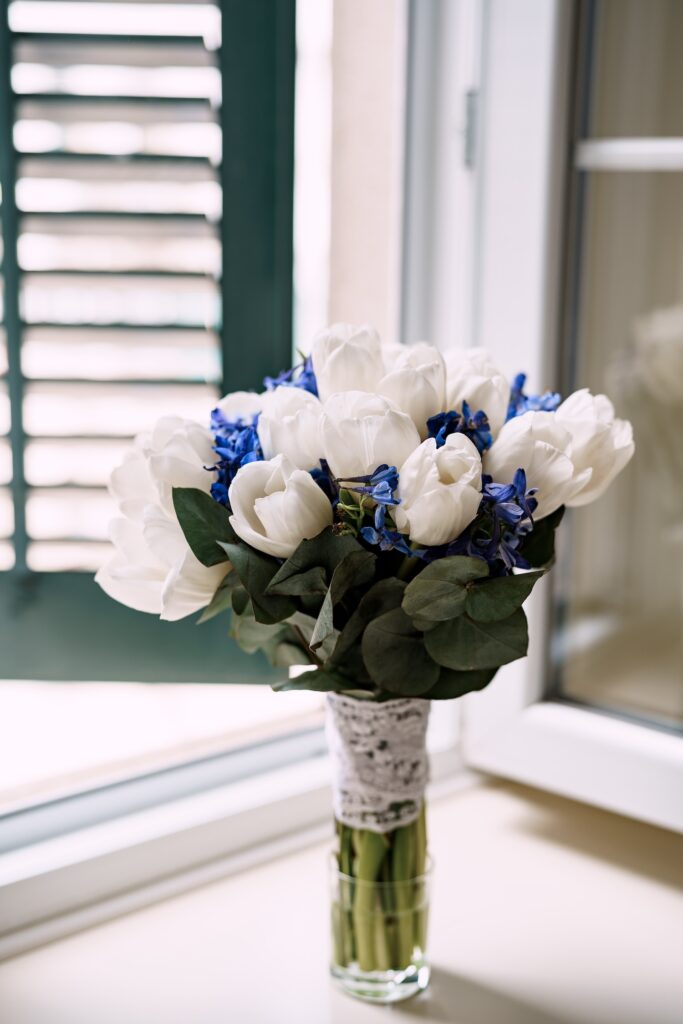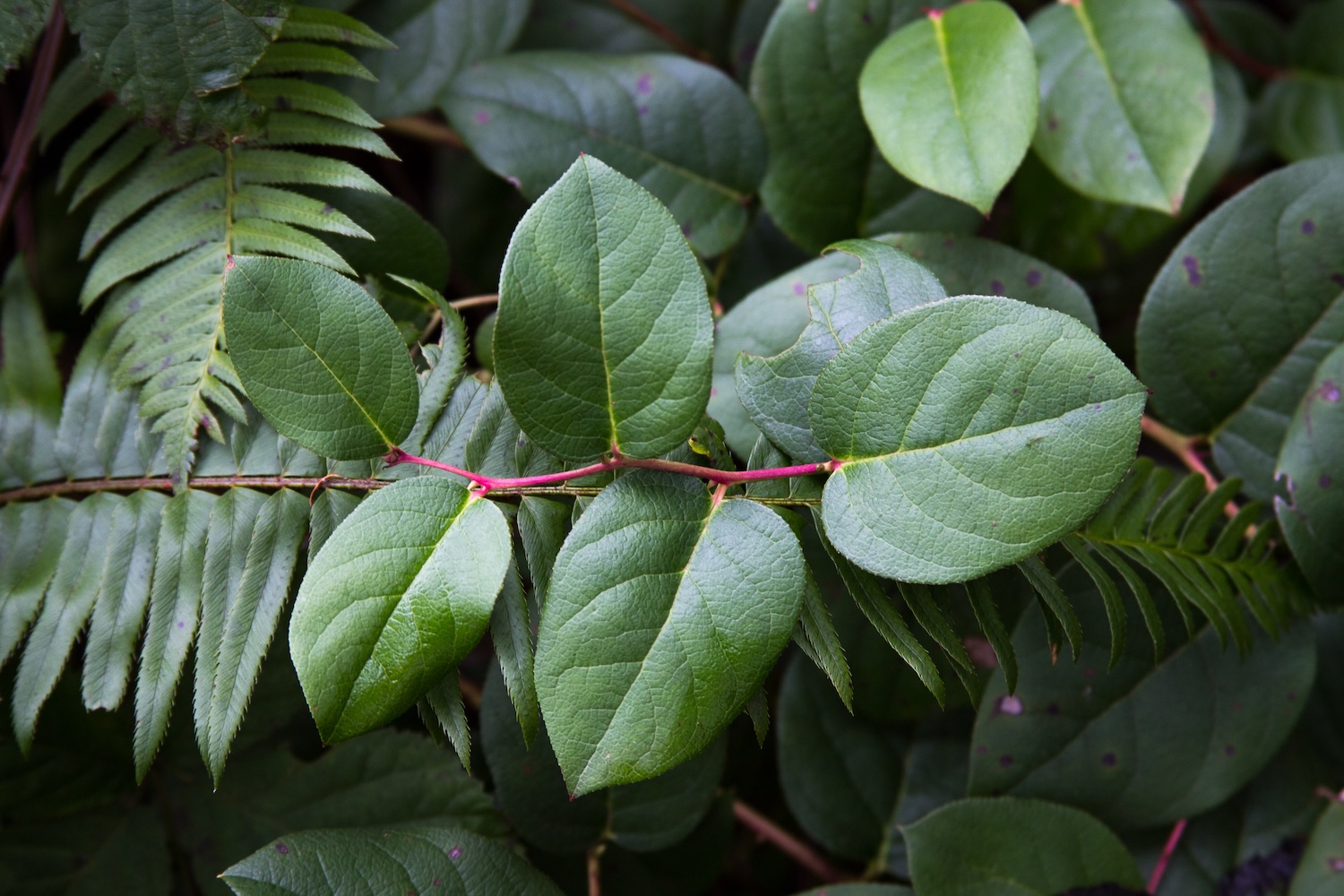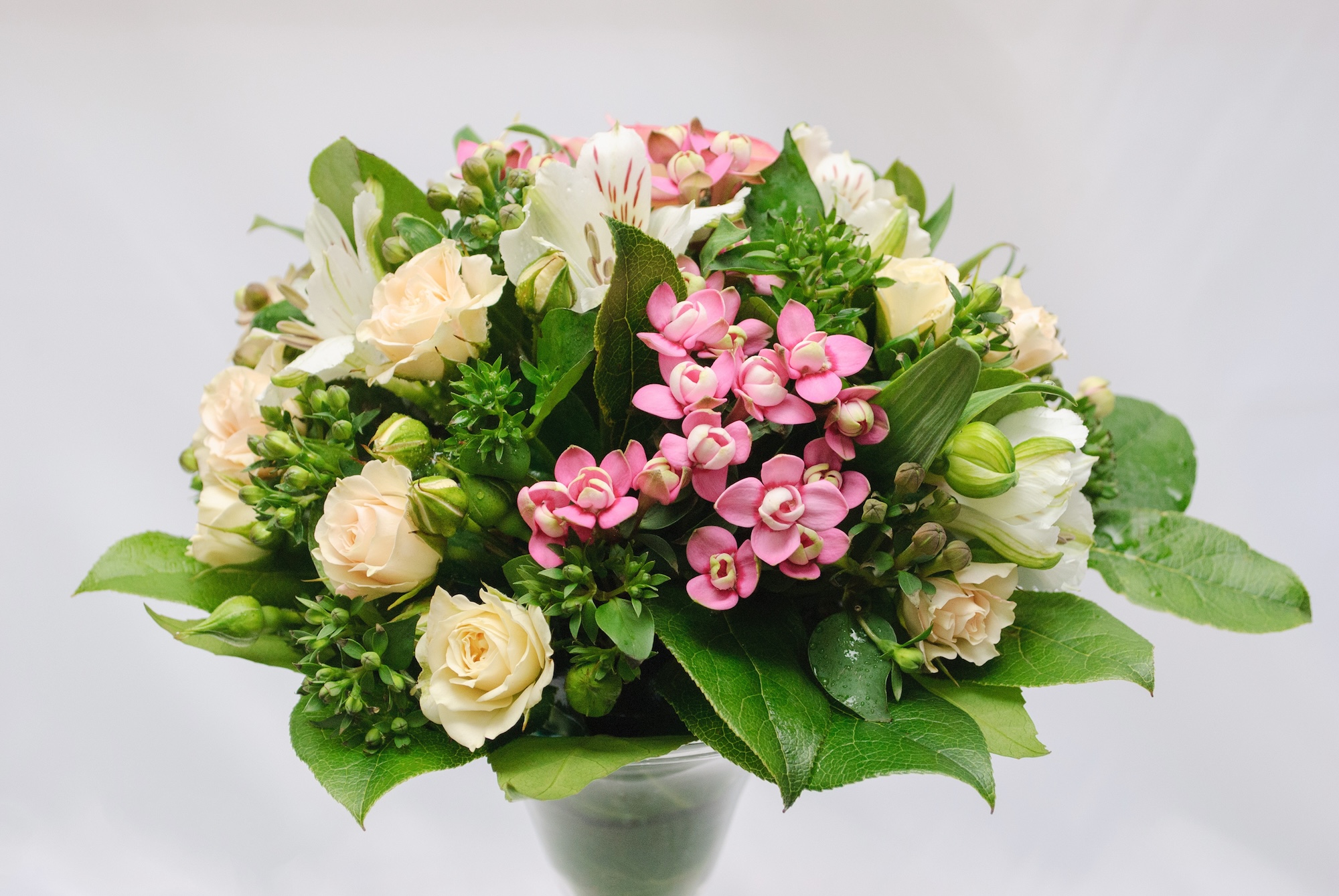Lemon leaf (Salal), with its oval, glossy leaves and leathery texture, offers both beauty and multi-purpose use to floral designers. Lemon leaf is popular for its long vase life and year-round availability. It adds fullness to bouquets while infusing arrangements with a subtle citrus fragrance. Lemon leaf enhances the visual appeal of floral designs and imbues them with natural elegance.
In this blog, we’ll explain how to enrich your floral designs using lemon leaf, highlighting its versatility and the freshness it brings to any setting.
How To Incorporate Lemon Leaf Into Your Arrangements

1. Prepare the Lemon Leaf for Your Arrangement
Proper preparation of the lemon leaves is essential to ensure the foliage remains fresh and vibrant within the floral arrangement. Taking the time to prepare your foliage can significantly affect your final design’s longevity and aesthetic appeal. Here are the steps you should follow:
- Wash lemon leaves under cool, running water to remove dirt or debris.
- Use a soft cloth or paper towel to lightly pat the leaves dry, avoiding harsh rubbing, which could damage them.
- Inspect each leaf for any signs of damage, discoloration, or insect infestation and remove those that don’t meet quality standards.
- Trim the stems at a 45-degree angle using sharp, clean pruning shears. This angled cut enhances water absorption, prolonging the vibrancy and life of the leaves in your arrangement.
- When incorporating them into your floral designs, leave about 2-3 inches of stem on each leaf to provide stability and structure.
2. Add Depth and Structure With Lemon Leaf
Lemon leaves’ shape and silhouette help add volume and stability to arrangements by filling gaps between flowers and creating a more natural, layered appearance. Here are tips for how you can use them to add depth and robustness to your designs:
- Layer for Volume: Strategically place lemon leaves at the base and interspersed throughout the arrangement to build volume. Their broad, glossy leaves provide a lush backdrop that makes the colors of the central flowers pop.
- Support Delicate Blooms: Lemon leaves’ sturdy structure supports and protects more delicate flowers. Positioning them around softer blooms helps prevent damage and maintains the arrangement’s intended shape.
- Create Focal Points: For a bold, modern look, consider using lemon leaves as the primary feature in a minimalist arrangement. Combining several lemon leaves can form a striking green focal point contrasting beautifully with more simple floral accents.
3. Combine Lemon Leaf With Complementary Plants
Lemon leaves pair well with many flowers and foliage, creating floral arrangements for any preferred style.
For a timeless design, pair lemon leaves with baby’s breath or the elegant simplicity of white roses, crafting an arrangement that exudes classic beauty.
When paired with classic flowers like hydrangeas, lemon leaves help create an elegant and classic look. For a contemporary feel, consider integrating lemon leaves with contrasting foliage such as the bold, tropical monstera or the aromatic, silvery strands of eucalyptus. Experiment with different pairings, such as adding leatherleaf or pittosporum, to find unique combinations.
When adding lemon leaves, always consider balance and proportion. Carefully adjust the quantity and placement of foliage relative to the flowers to ensure a harmonious and aesthetically pleasing composition.

4. Accentuate Your Floral Arrangements with Lemon Leaf’s Rich Green
Lemon leaf’s rich, classic green hue can complement or contrast a variety of flowers. When paired with white flowers, the contrast of lemon leaves’ deep green heightens the flower’s brightness. Alongside similarly colorful flowers, they accentuate their vivid hues, adding depth and visual interest. This foliage also offers a fresh contrast against more muted, pastel-colored blooms, ensuring these arrangements don’t look washed out or one-dimensional.
Lemon Leaf’s’ reflective quality also captures light, lending a striking luminous effect in dimly lit settings. This ensures that your floral arrangements stand out with a fresh, lively contrast.
5. Add Textural Variety With Lemon Leaf
In addition to their color, lemon leaves’ leathery, slightly oily texture creates a visually appealing contrast against the softer petals of flowers. By incorporating these sturdy leaves, you can create layers of texture that add fullness and visual interest to any design. Additionally, using lemon leaves alongside different natural elements, such as twisted branches like curly willow or woven baskets, can amplify the textural diversity of an arrangement.
The textural interplay between the lemon leaves and the other components adds interest and dimension to the arrangement, preventing it from appearing flat or one-dimensional. Combining gentle, velvety floral blooms with the sturdy, leathery lemon leaf creates a harmonious and visually striking floral display.
What Types of Arrangements Can You Create With Lemon Leaf?
Lemon leaves are timeless foliage that can be seamlessly incorporated into seasonal arrangements and themed decor. Thanks to their ability to complement any style or setting, they are an easy addition to any floral design. There are endless possibilities for what you can create with it, but we’ll cover just a few of the most popular uses for lemon leaf.
Craft Themed Arrangements With Lemon Leaf
Themed designs can transport viewers to different places or evoke specific aesthetics. Here are some suggestions:
- Mediterranean Inspiration: With its citrusy notes, lemon leaves evoke the ambiance of the Mediterranean. They pair well with the vibrant, lively flowers typical of Mediterranean-style arrangements, enhancing the display’s complementary deep green.
- Modern Minimalism: For minimalist designs, use lemon leaves sparingly to introduce a touch of natural texture and color, complementing sleek, contemporary setups without overwhelming them.
- Classic Romance: In romantic arrangements, the shiny green of lemon leaves contrasts beautifully with delicate blooms, adding depth and a hint of passion.
- Avant-Garde Arrangements: Lemon leaves work well in eclectic, asymmetrical arrangements, where their structured shape and textural contrast can balance and enhance unconventional designs
Use Lemon Leaf in Seasonal Arrangements
- Spring: Lemon leaves paired with spring blooms help highlight the bright, cheerful ambiance of the season, enhancing any spring-themed event.
- Summer: Lemon leaves pair well with vivid summer florals, bringing a fresh feel to designs. Try arranging them around candles or as part of centerpieces.
- Fall and Winter: During the cooler months, combine lemon leaves with jewel-toned flowers to create arrangements that reflect the seasons’ moodiness and elegance.

Get Lemon Leaf and All Your Foliage Needs From Alpha Fern
In this guide, we’ve shown how you can use lemon leaf to add fullness, depth and textural variety to your floral arrangements and how it can be used to enrich any style of arrangement. With our extensive selection of over 50 types of floral greens, including lemon leaf, Alpha Fern equips you with everything needed to create any arrangement you can imagine. As a leader in floral-greens farming since 1975, we’re your go-to source for premium cut greens and bulk foliage. Whether preparing for a large-scale event or stocking up for the season, our variety of top-quality products gives you everything you need to create stunning arrangements.
Ready to source fresh, long-lasting foliage for your next arrangement? Create an account with Alpha Fern today to shop our collection of ferns and foliage.

